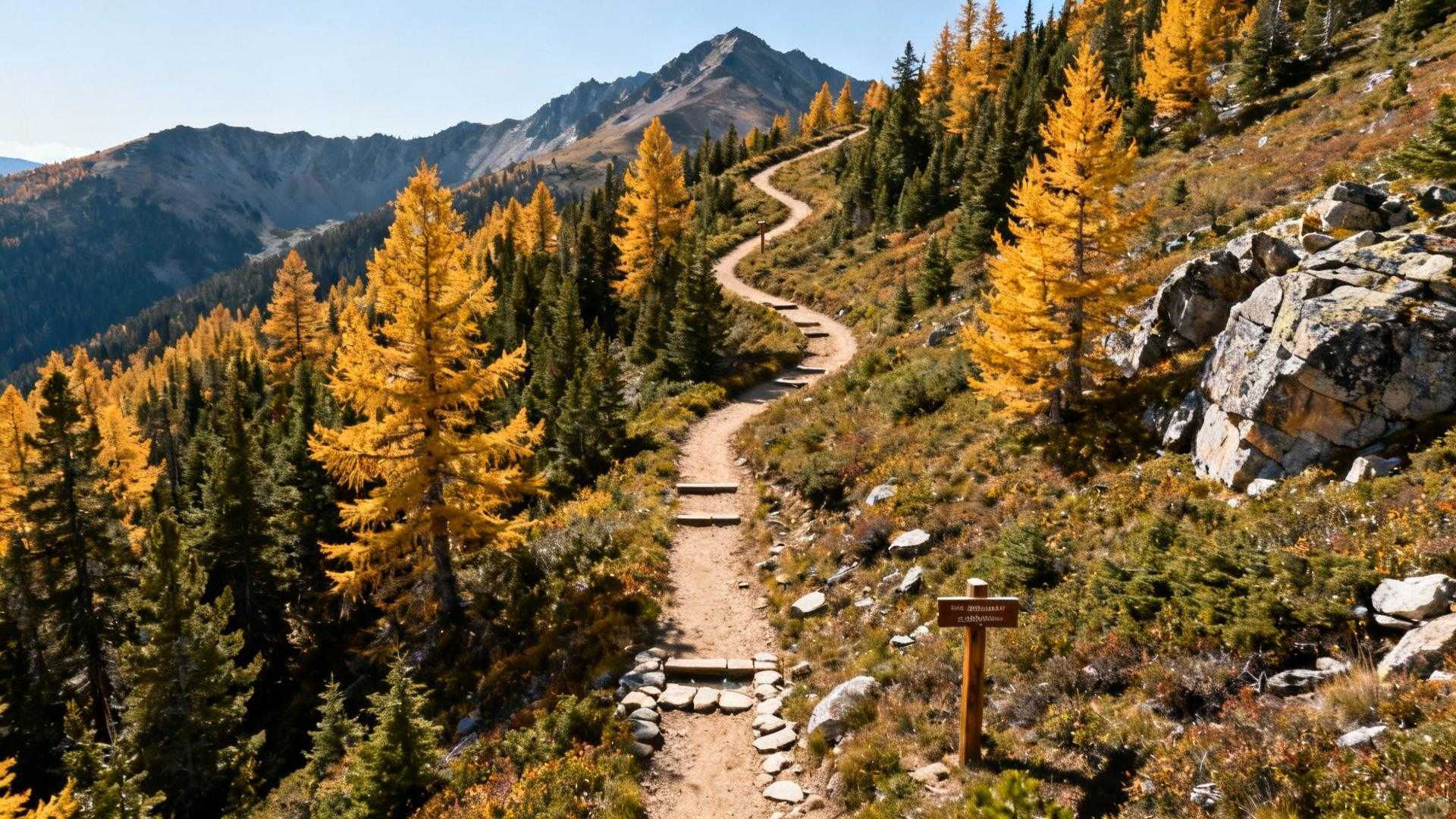Twenty years ago, we started documenting mountain towns across North America with one question: which communities truly invest in the trails that define them? After exploring 900 destinations from Whistler’s commercialized peaks to Vermont’s quiet hills, we found something unprecedented in British Columbia’s Monashee Mountains—a 3,600-resident village that pays a full-time crew to maintain what locals call their “Mountain Biking Capital of Canada” glory on routes once traveled by gold rush miners and whisky runners in 1897.
Rossland shouldn’t exist at this elevation. At 1,023 meters, winter temperatures plunge below -20°C, yet this former mining boomtown transformed abandoned railway beds and miners’ wagon trails into over 200 kilometers of professionally maintained singletrack. While Whistler charges $600 nightly rates for crowded slopes and Banff processes 4 million annual visitors through its commercialized streets, Rossland’s paid trail crew spends every day preserving something increasingly rare: authentic mountain town character where adventure infrastructure serves residents first, tourists second.
The official designation that changed everything
When Explore Magazine named Rossland the Mountain Biking Capital of Canada, the designation recognized something unique—municipal investment in year-round trail maintenance that rivals destinations ten times its size. The town’s 134 trails span every difficulty level, from family-friendly cruises through wildflower meadows to expert-only descents that drop 1,035 vertical meters.
What makes the Seven Summits Trail an IMBA Epic
Canada has only three IMBA Epic trails, all in British Columbia, and Rossland’s Seven Summits earned both that designation and Bike magazine’s 2007 Trail of the Year award. The 30.4-kilometer route climbs to 2,194 meters through alpine terrain that takes average riders six hours to complete, with 95% singletrack weaving through landscapes that mirror Alaska’s wilderness advantage over Iceland’s crowded aurora tours—authentic North American adventure without European price tags.
The gold rush routes that became biking trails
Trail builders didn’t bulldoze new paths through pristine forest. They restored 1897 mining infrastructure—the same wagon routes that hauled gold ore from Red Mountain’s slopes now carry mountain bikers past abandoned mine shafts and weathered trestles. The Flying Steamshovel, one of Canada’s oldest pubs, still serves the community from its original 19th-century location, proof that Rossland preserves heritage instead of theme-parking it.
Why paid trail crews matter more than you think
Most mountain towns rely on volunteer maintenance or occasional grooming funded by tourism taxes. Rossland’s full-time paid crew represents a philosophical commitment—trails maintained to professional standards year-round, with clear signage systems, erosion control, and seasonal adaptation that prevents the degradation plaguing volunteer-dependent networks.
The maintenance system that protects 200 kilometers
Every trail in Rossland’s system receives regular inspection and maintenance, from easy green runs suitable for families to 10 extra-difficult black diamond routes that challenge expert riders. This professional approach, similar to Switzerland’s Mürren protecting alpine authenticity from Zermatt’s commercialization, ensures sustainable trail ecosystems that balance recreation with environmental preservation.
What locals actually think about tourism
The community protects trail quality fiercely, viewing tourism as welcome but secondary to resident quality of life. You won’t find chain hotels or big-box retail destroying Rossland’s compact downtown—just independent gear shops, local cafes, and the community values that keep places authentic when discovery threatens to overwhelm them.
The transformation from mining boomtown to adventure hub
Rossland’s 1897 founding during British Columbia’s gold rush created infrastructure that now supports adventure tourism—the same elevation that made mining viable provides perfect conditions for Red Mountain Resort’s 4,200 skiable acres of deep powder. Winter transforms the village into a skiing destination, while summer reveals the trail network that earned its capital designation.
How seasonal transitions work at this elevation
The Seven Summs Trail typically opens July 1 and closes in October with first snowfalls, creating compressed seasons that intensify rather than dilute the experience. October visitors catch fall colors painting alpine meadows while booking shoulder-season rates before winter tourism peaks, much like California’s Pioneertown preserving 1946 cowboy heritage through living history instead of manufactured experiences.
Getting there without major airport hassles
Rossland sits 2.5 hours from Spokane International Airport, making it more accessible than remote Canadian destinations requiring connecting flights. Trail Regional Airport (15 minutes) and Castlegar (45 minutes) offer regional connections, while the unceded Sinixt territory location adds cultural depth that responsible visitors should acknowledge and respect.
Planning your visit to mountain biking’s paid-crew capital
Book accommodations through local operators rather than chain hotels—the independent lodging options reflect community values that prioritize authenticity over standardization. Summer visitors need bikes suitable for technical terrain, while winter travelers discover skiing conditions that rival major resorts without the crowds or $600 hotel rates.
We’ve documented 900 mountain towns, and Rossland remains one of fewer than ten communities that genuinely invest municipal resources in trail infrastructure year-round. That paid crew maintains standards most destinations achieve only through volunteer passion, creating sustainable adventure tourism that serves residents first. And as Instagram discovery threatens to transform every hidden destination into another overcrowded Whistler, Rossland’s protective local attitude might be the only thing keeping those gold rush routes rideable for the next generation of miners seeking alpine singletrack instead of ore.
Common questions about Rossland’s trail system
Do I need advanced skills for Rossland’s trails?
The 134-trail network includes 34 easy and 58 intermediate options suitable for developing riders, though the famous Seven Summits Epic requires solid technical skills and 6+ hours riding stamina. Beginners should start with lower-elevation trails before attempting alpine routes.
When is the best time to visit for mountain biking?
July through September offers the most reliable trail conditions, with October providing fall colors but risking early snowfall closures. The paid trail crew posts current conditions online, unlike volunteer-maintained systems where status updates lag behind weather changes.
How does Rossland compare to Whistler for value?
Accommodation, dining, and lift ticket costs run 40-50% lower than Whistler, with none of the 3 million annual visitor crowds. Red Mountain Resort delivers comparable terrain quality and superior powder conditions without premium pricing or reservation systems.
